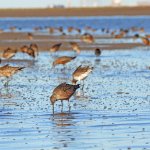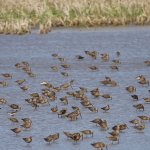This article was first published in Manomet’s newsletter
In a typical June, staff from Manomet’s Shorebird Recovery Program are coordinating multiple teams of field workers to carry out critical research on breeding shorebirds in the Arctic under challenging and sometimes even dangerous conditions.
Unfortunately, the dangerous COVID-19 pandemic has prevented research in the Arctic this year—the risk of traveling to remote areas with limited medical facilities and the risk of bringing COVID-19 to Indigenous communities was too great. Many of the species targeted by the research, such as American Golden Plover (Pluvialis dominica) and Red Knot (Calidris canutus rufa), make the most of the small window of Arctic summer to breed. Still, they spend more of the year at “wintering sites” in southern South America during the austral summer. In effect, Arctic-breeding shorebirds live in a perpetual summer.
These “wintering sites” for the Arctic-breeding shorebirds provide a year-round home for so many of their Patagonian-breeding brethren. Whilst the Arctic breeders enjoy the benefits of the long Arctic summer days, their southern counterparts eke out a living in the harsh Patagonian winter.
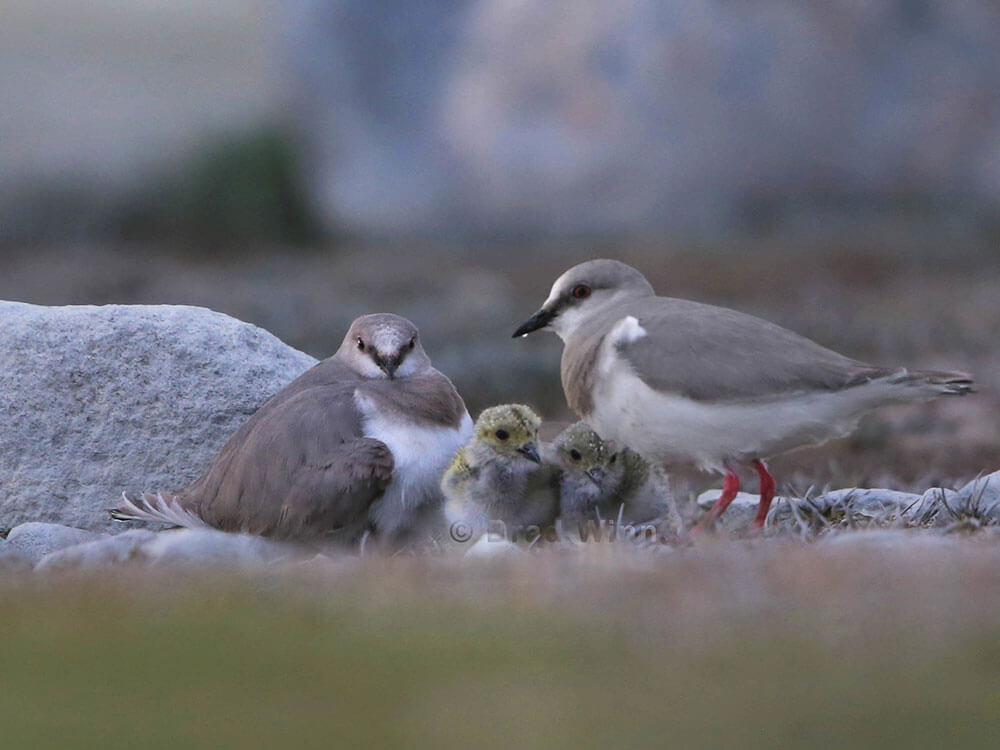
Magellanic-Plover (Pluvianellus socialis) in Patagonia. Photo: Brad Winn
Perhaps the most charismatic and enigmatic of all Patagonian-breeding shorebirds is the Magellanic Plover (Pluvianellus socialis). Rather turnstone-like in shape, its soft grey-and-white plumage contrasts with pinkish-red eyes and legs. Restricted as a breeding species to the southern tip of South America, pairs breed around inland lagoons, where, uniquely among shorebirds, they feed their young by regurgitation. During the austral winter (i.e. now) most Magellanic Plovers move to the coast, where they may congregate in estuaries such as that of the Río Gallegos in southern Santa Cruz Province, Argentina. Counts of up to 190 birds represent over 10% of the global population of the species. Due to this, the Río Gallegos Estuary became the first site within the Western Hemisphere Shorebird Reserve Network (WHSRN) to be designated for a South American-breeding shorebird species.
The taxonomic affinities of Magellanic Plover are rather obscure, but it appears to be most closely related to an even stranger shorebird, one with the appearance of a stocky all-white pigeon, the Snowy Sheathbill (Chionus albus). Sheathbills are the only species of shorebird that breeds in Antarctica and the sub-Antarctic islands, where they feast on the afterbirth and dead pups at seal colonies, and terrorize penguin chicks. In the austral winter, many sheathbills move north to the coasts of southern South America, to sites such as the Atlantic Coast of Tierra del Fuego Reserve, a WHSRN site designated due to its importance for rufa Red Knot and Hudsonian Godwit (Limosa haemastica). Although there is not yet a WHSRN site for the Snowy Sheathbill, the numbers occurring at several sites in Patagonia are likely sufficient to qualify—just 200 sheathbills represent 1% of the global population of the species.
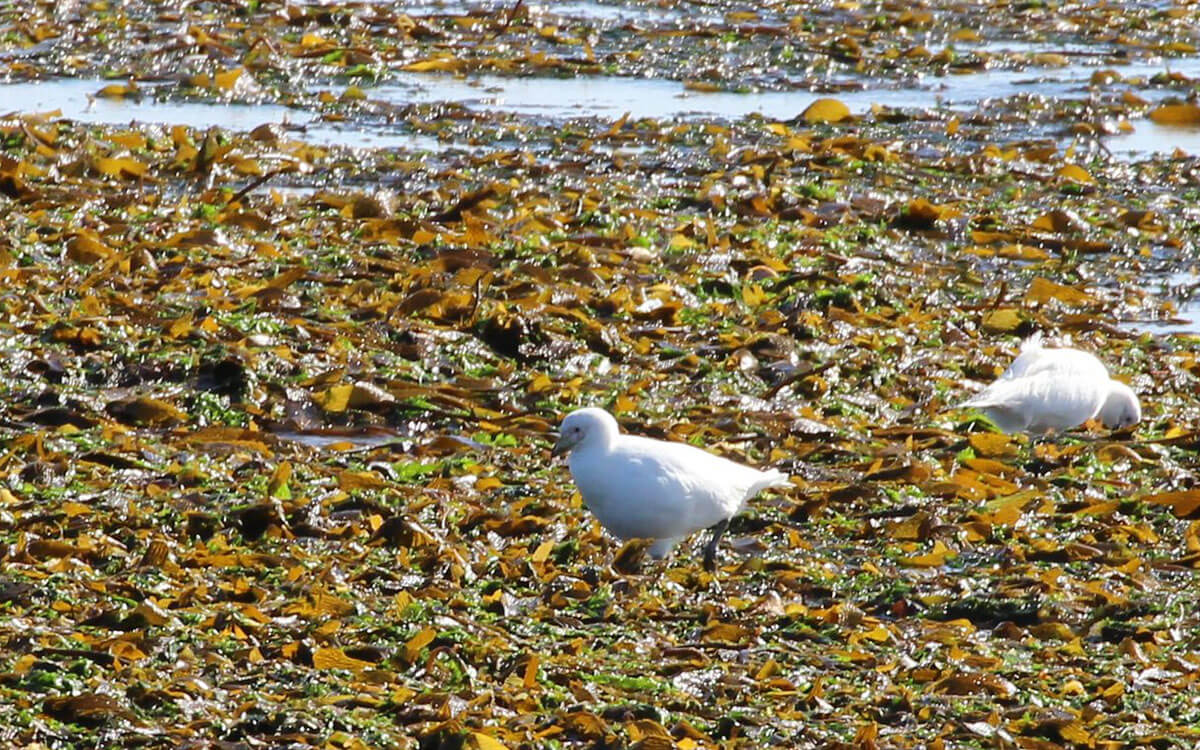
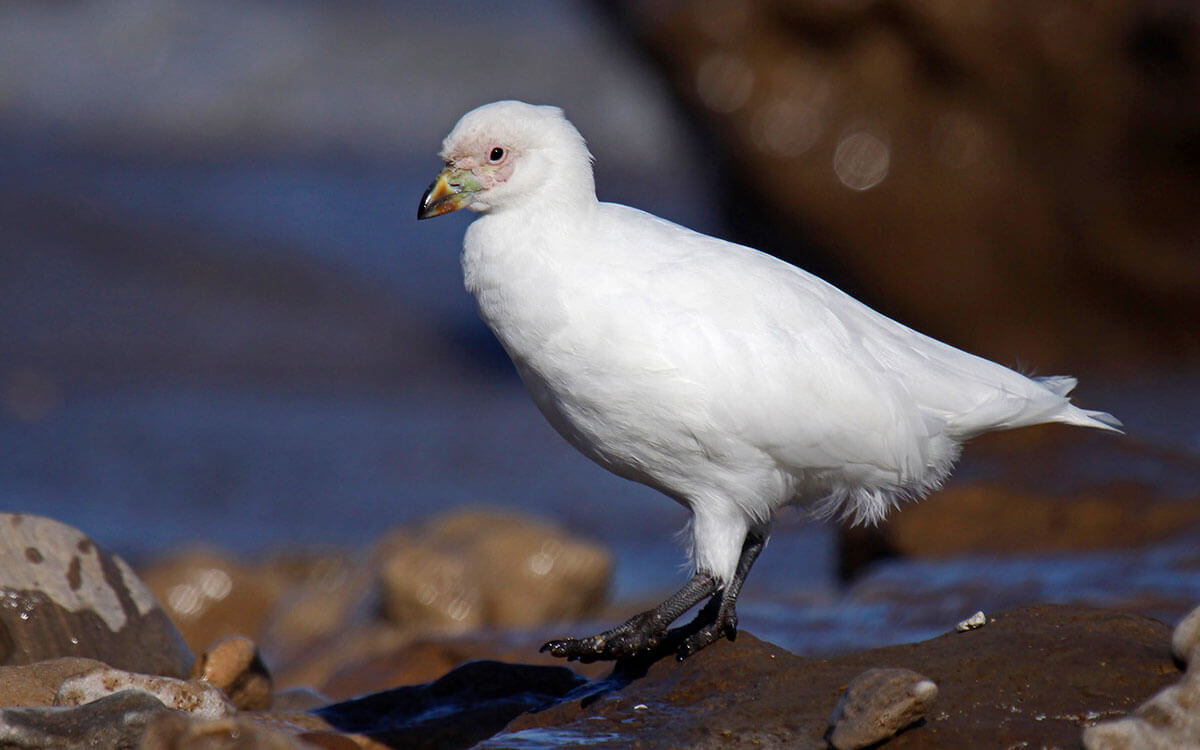
Snowy-Sheathbill. Photos: Monica Iglecia (left) and Pablo Petracci (right).
Away from the coast, the distinctive and aptly-named Tawny-throated Dotterel (Oreopholus ruficollis) breeds in sparse grasslands in the Patagonian steppe, migrating north during the austral winter as far as the Pampas of central Argentina and southern Uruguay. Here it occurs in the same habitats, even the exact same fields, as Buff-breasted Sandpipers (Calidris subruficollis) and American Golden Plovers (Pluvialis dominica) , though separated by the seasons (though sometimes only by a matter of weeks). The species occurs at several WHSRN sites designated for the two Arctic-breeders, including Laguna de Rocha in Uruguay, and Estancia Medaland in Buenos Aires Province, Argentina (designated for both Buff-breasted Sandpiper and Tawny-throated Dotterel).
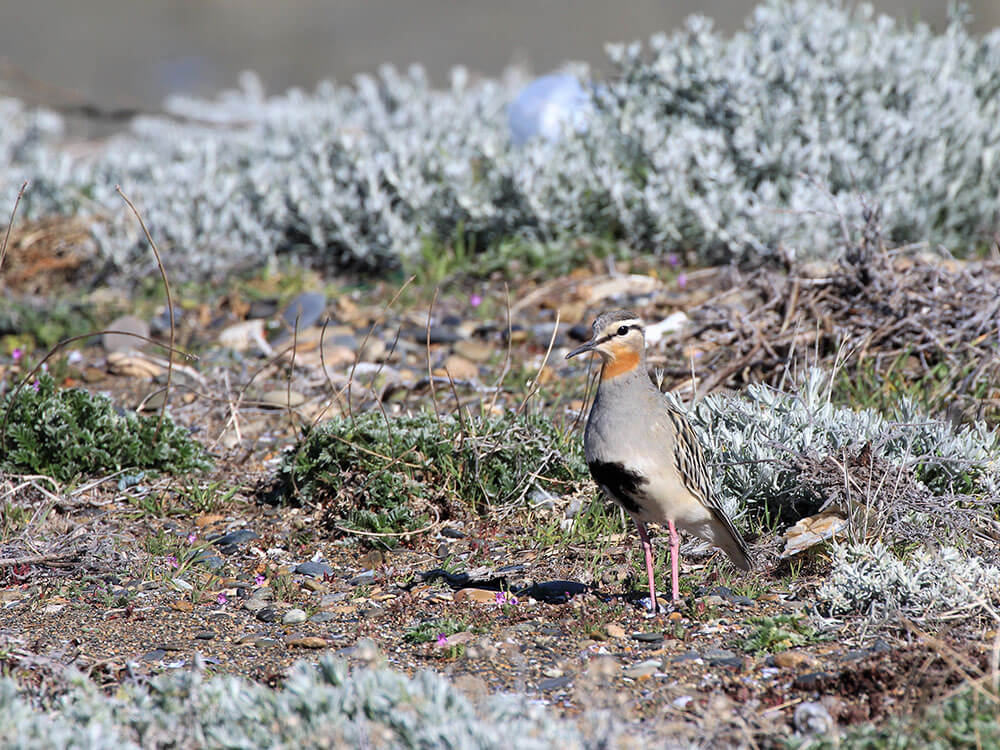
Tawny Throated Dotterel at WHSRN Site Rio Gallegos. Photo: Monica Iglecia
Many of the threats to Arctic-breeding species on their wintering grounds also put the Patagonian species at risk. The loss of intertidal habitats threatens both rufa Red Knot and Magellanic Plovers alike. The disturbance of foraging and roosting birds impacts both wintering Hudsonian Godwits and Snowy Sheathbills. In fact, with the limited hours of daylight and harsh weather during the Patagonian winter, the impacts of disturbance on sheathbills and Magellanic Plovers may be far more significant than for the Arctic visitors during the summer months. And finally, the loss and degradation of Pampas grasslands puts both Arctic and Patagonian breeders at risk.
Shorebirds reveal just how interconnected our world is: over the course of a year, a coastal wetland in Patagonia can play a critical role for the survival of species that breed locally, in the Arctic, or in Antarctica. There is never an ‘off-season’ for shorebird conservation.
Cover Photo: American Golden Plover roost in Manitoba, Canada. Photo: Monica Iglecia.





